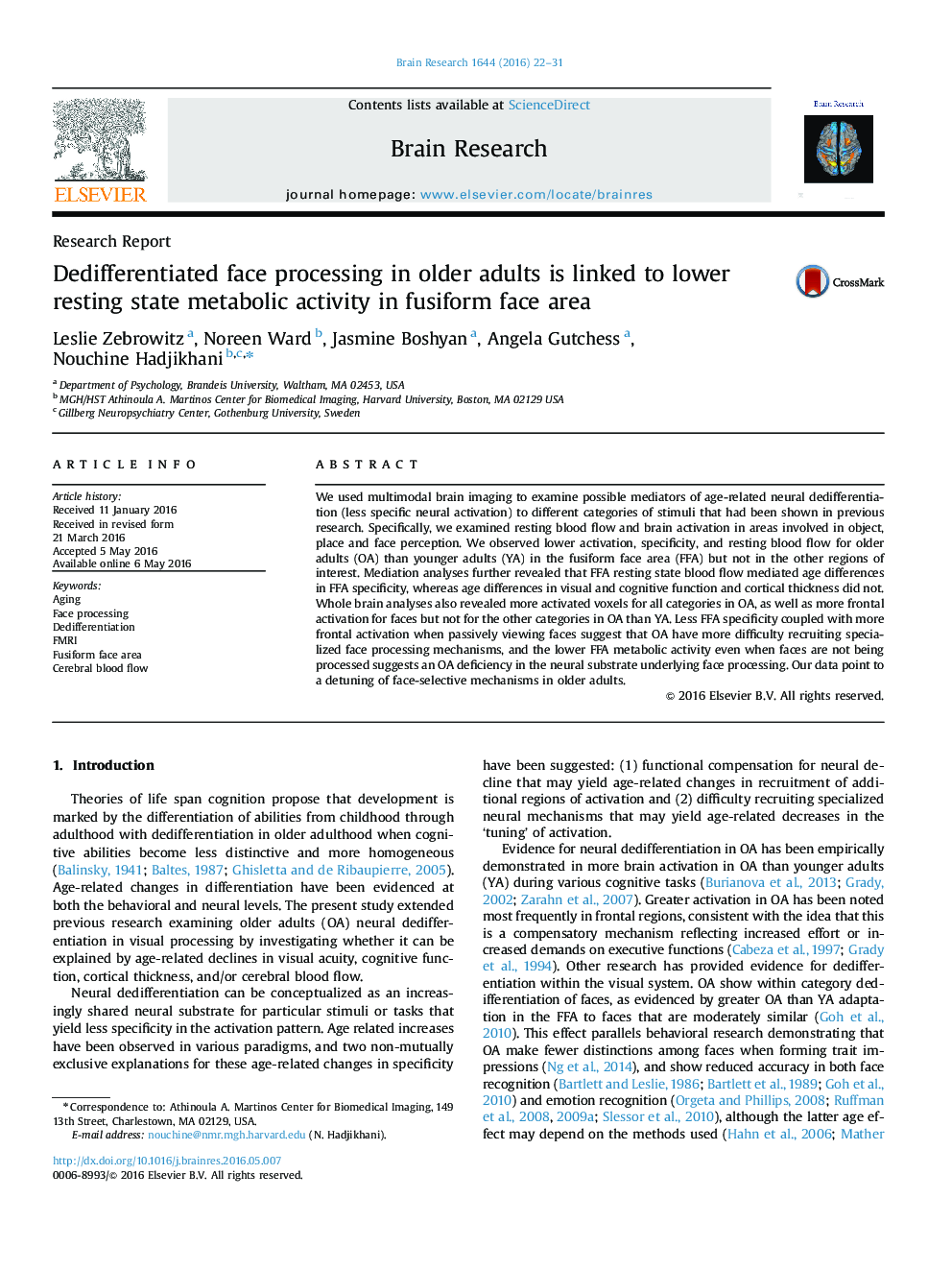| Article ID | Journal | Published Year | Pages | File Type |
|---|---|---|---|---|
| 6262446 | Brain Research | 2016 | 10 Pages |
â¢Fusiform face area shows dedifferentiation during face perception in older adults.â¢This is not the case for other categories of stimuli, in other specialized areas.â¢Fusiform face area shows reduced blood flow at rest.â¢There may be a detuning of face-selective mechanisms in older adults.
We used multimodal brain imaging to examine possible mediators of age-related neural dedifferentiation (less specific neural activation) to different categories of stimuli that had been shown in previous research. Specifically, we examined resting blood flow and brain activation in areas involved in object, place and face perception. We observed lower activation, specificity, and resting blood flow for older adults (OA) than younger adults (YA) in the fusiform face area (FFA) but not in the other regions of interest. Mediation analyses further revealed that FFA resting state blood flow mediated age differences in FFA specificity, whereas age differences in visual and cognitive function and cortical thickness did not. Whole brain analyses also revealed more activated voxels for all categories in OA, as well as more frontal activation for faces but not for the other categories in OA than YA. Less FFA specificity coupled with more frontal activation when passively viewing faces suggest that OA have more difficulty recruiting specialized face processing mechanisms, and the lower FFA metabolic activity even when faces are not being processed suggests an OA deficiency in the neural substrate underlying face processing. Our data point to a detuning of face-selective mechanisms in older adults.
